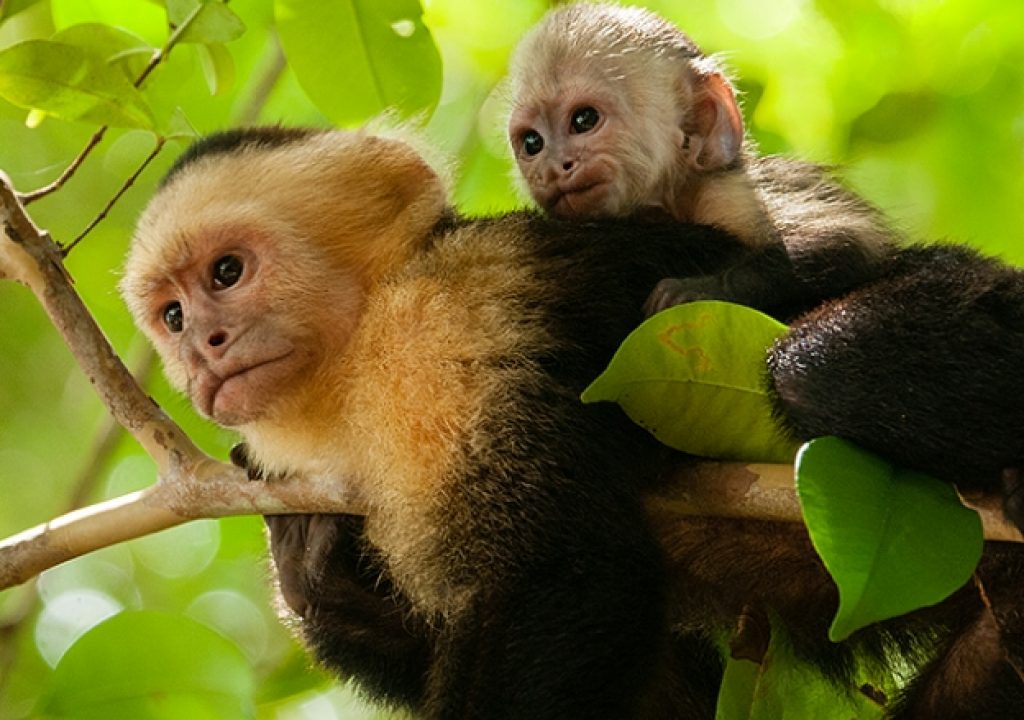
I just returned from a trip to Costa Rica, and of course I had my cameras in hand. The ocean, wildlife and landscapes were spectacular! I spent time scouting for a workshop I will be teaching next February in Costa Rica, and wrote down some tips for the first time 'jungle shooter'. Since July is the rainy season in Costa Rica, we had plenty of wet, humid conditions, the type of weather that can cause serious problems for you and your camera if you aren't careful. Below are some shooting tips that should make any photography trip more enjoyable for this type of environment. Shooting in the jungle is an opportunity not to be missed.
1. Dial up your ISO. Walking from the sunny beach into the dense jungle is like closing the aperture on your lens. Light is greatly filtered out by the dense canopy, so you need to shoot at high ISOs. I regularly was shooting at ISO 800-3200 depending on the situation. If you have vibration reduction, make sure it is turned on.
2. Always have a rain cover handy. Tropical rainstorms can hit fast and furious. We had evening storms that dumped inches of rain in a few hours time. And don't even try to predict the weather. Sunny skies can turn into pouring rainstorms very quickly, so always have a way to keep your camera dry. I carried a Lowe Pro Flipside 400 pack with rain cover which kept my gear dry. I also had lightweight FotoSharp rain covers for my camera when I was shooting in the rain.
3. Watch the AC. Here is the classic scenario: you run into your hotel room to grab your camera because there is a monkey right on your balcony. But your camera is very cool from being the room, and the outside is very hot and humid. Within seconds your lens is fogged up. The way to avoid this is trying to keep your camera/lens at temperatures similar to the outside. If you are driving around in a car, keep the car a little warmer so the lens doesn't fog up when you go outside. If your lens (inside) does fog up, give it some time to warm up, eventually the fog should dissappear.
4. Consider manual focus. On cloudy days in the jungle the light can be so low that even 2.8 lenses struggle to autofocus. If your lens is struggling to focus, try using manual focus for better results. Newer cameras with the latest metering systems do well even in this low light.
5. Watch your background. Because the jungle is so dense, backgrounds can be very busy and ruin a good shot. Try using shallow depth of field and really watch your backgrounds, especially for bright spots on sunny days. The contrast can be very severe, so watch for blown out highlights.
6. Try using a flash. Flash can add light to your scene, but be careful how you use it. Photographing poison dart frogs on the jungle floor with off camera speedlights works great. So does adding just a little fill light to a monkey or exotic bird. But be careful blasting strong on-camera flash right at your subject, you will get strong shadows and an unnatural look.
7. Humidity hurts electronics. Once in Panama I had my laptop stop working. I was using it in the jungle and in hot humid enviroments. I was distraught at first, but remembered hearing if you put your computer in your air conditioned room it might start working. Sure enough, after a day inside in my hotel room with low humidity my computer started working again. Worth a try on electronics that stop working.

